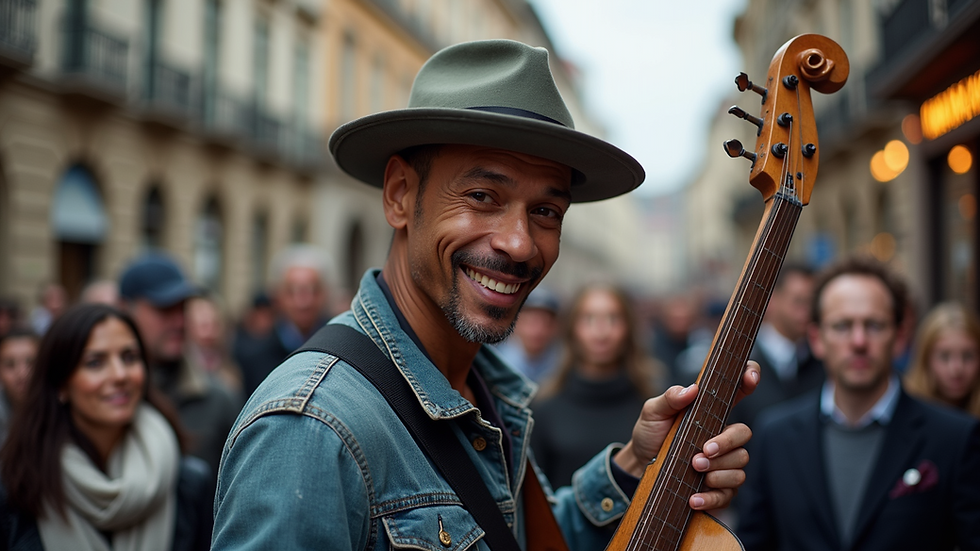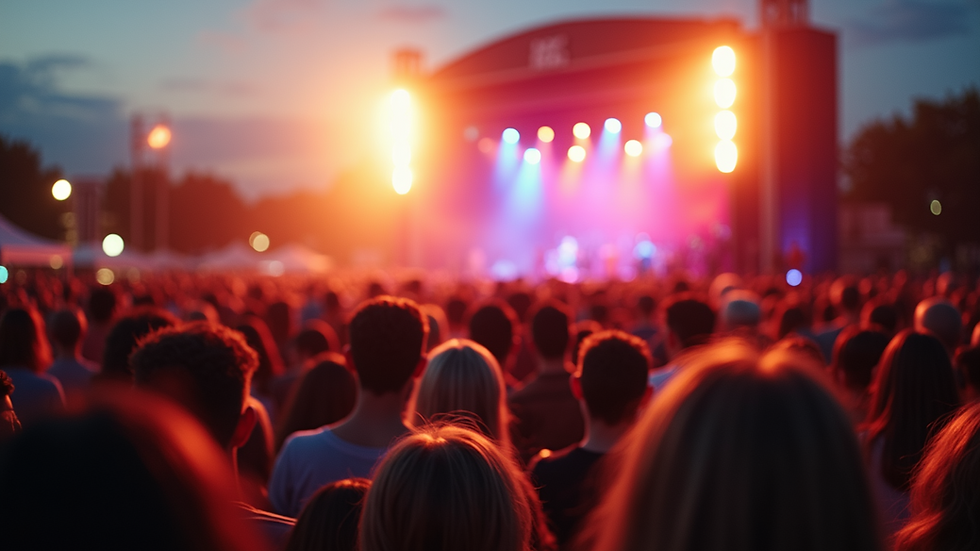Harnessing the Power of Music to Elevate Customer Engagement in Today’s Competitive Landscape
- info1989194
- Jul 4
- 3 min read
In the hustle and bustle of today’s market, businesses are always on the lookout for fresh ways to connect with their customers. An often overlooked yet impactful tool is music. It has the ability to create a welcoming atmosphere, influence emotions, and foster deeper connections. This post dives into how effectively using music can boost customer engagement, ultimately leading to improved loyalty and satisfaction.
The Emotional Influence of Music
Music has a unique talent for stirring emotions. A lively tune can lift spirits, while a gentle melody can calm nerves. Research shows that background music in retail settings can increase the time spent by customers in stores by up to 30%. For example, one study found that playing soothing music led to a 20% boost in customers' time spent shopping, resulting in increased sales.
Moreover, music can shape positive brand associations. A brand that plays a specific type of music can create an inviting and memorable ambiance. For instance, a boutique that plays indie folk music can attract a creative crowd, enhancing their overall experience and relationship with the brand.

Crafting the Perfect Playlist
To effectively use music, businesses must consider their audience and the environment. Here are a few critical steps to create the perfect playlist:
Understand Your Audience
It’s vital to know your audience's musical tastes. Conduct surveys or use social media to gather feedback. For example, a fashion retailer might learn that their customers prefer upbeat pop over jazz. Tailoring music to meet these preferences can have a significant impact on customer satisfaction.
Set the Mood
Decide what atmosphere you want to create with music. If the goal is to foster relaxation, choose soft piano or acoustic tracks. Conversely, if you want to energize your space, opt for up-tempo pop or dance music. For instance, a gym can play energetic beats to motivate clients during workouts.
Be Consistent
Consistency is crucial. The type of music should align with the brand’s image. Regularly refreshing playlists can keep the experience dynamic, encouraging customers to return. A restaurant known for lively gatherings may choose to adjust their music not just daily but based on special events or the theme of the week.
The Role of Music in Digital Spaces
The digital landscape offers businesses unique opportunities to engage customers through music. Using music in various online channels can significantly enhance the customer experience.
Video Content
Effective use of music in video content can greatly enhance storytelling. A well-chosen soundtrack can make videos more engaging and memorable. For instance, a travel company showcasing breathtaking destinations with an uplifting score can inspire viewers to book trips.
Social Media Engagement
E-commerce brands can also tap into music to boost engagement on platforms like Instagram and TikTok. Creating catchy, music-driven content can lead to higher interaction rates. Statistics reveal that videos with music experiences have a 50% higher share rate on social media, making it a powerful tool for reaching broader audiences.
Case Studies: Successful Use of Music in Customer Engagement
Real-world applications can shed light on how to successfully use music in engagement strategies.
Retail Success
A well-known coffee chain has developed playlists that reflect the time of day, starting with calming jazz in the morning and transitioning to lively indie tracks by noon. This strategy not only enhances enjoyment but also encourages customers to return, reportedly increasing visits by 15% during peak hours.
Restaurant Atmosphere
A popular restaurant implemented live acoustic performances on weekends, creating a unique experience that customers love. This strategy led to a 25% increase in social media mentions and shares, amplifying the restaurant's online visibility and attracting new customers.
Measuring the Impact of Music on Engagement
To assess the effectiveness of music in customer engagement, businesses need to track certain metrics.
Gather Customer Feedback
Encouraging customer feedback on the musical ambiance can yield valuable insights. Short surveys or quick feedback forms can help identify preferences and improve future music choices.
Analyze Engagement Metrics
Utilizing analytics to monitor customer behaviors—like their time spent browsing or social media interactions—can reveal how music affects engagement. Reviewing changes in customer behaviors after implementing music strategies provides clarity and helps refine approaches.
The Bottom Line
In a competitive landscape, the strategic use of music can provide businesses with a meaningful edge. By tapping into the emotional power of music, brands can forge deeper connections with their audiences, enhancing loyalty and overall experiences.
As the market continues to evolve, those who leverage music effectively will find themselves better equipped to resonate with their customers. Tailoring playlists that capture brand identity or innovating with music in digital spaces can lead to exciting opportunities for greater customer satisfaction and lasting relationships.

By exploring creative engagement strategies, let your brand's unique rhythm pave the way to a more fulfilling customer experience.





Comments